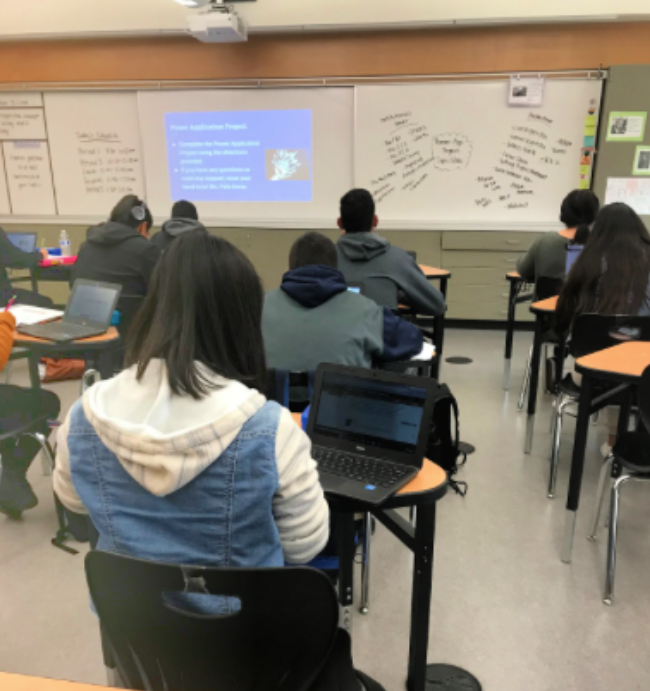Teaching in Richmond means being relatively close in distance to Silicon Valley but often means having limited resources when compared to the big tech companies close by. Our students are expected to and have a great desire to excel and make their lasting impact in careers like engineering, software design, video games, etc. However, through the research process for my community digital narrative, I discovered that for some students, there exists an achievement gap when it comes to their exposure to technology in schooling.
The majority of my students attended middle schools in West Contra Costa Unified School District (WCCUSD). WCCUSD created the “Technology Plan” that would be rolled out from 2017-2020. This plan outlined clear goals and reasoning behind improving the exposure our students had to technology and stated, “that the use of technology should be integrated into the curriculum at all levels in order to improve student achievement. Technology should not be a separate content taught for its own sake. Technology improves student performances when the application directly supports the curriculum objectives being assessed.”
Through this plan, it is clear that the district is aware of the benefits of having technology paired with a rigorous curriculum. However, in practice, students felt alone and helpless when asked to begin working with technology. In a recent student interview, one of my students recalled feeling “dumb” for having to ask his 9th grade teacher questions about technology since most students in his classes were able to complete the tasks asked of them with technology. Upon speaking with more students, it became clear that his experience was once shared by many. No student should feel this disconnected and troublesome over technology in this day and age.
These student interviews allowed me to conclude that home access to technology has a great impact on their digital literacy, and we should be using this truth to provide parents with coaching and resources to support this learning at home. It was also clear that many of my students had different middle school experiences with technology, and I am expected to ask the same of them all, while providing different supports to those who come into my class with gaps. My students should be able to ask for help without feeling “dumb” or scared to ask. To conclude, we should be increasing access to doors of opportunity instead of being a roadblock for students. This is one way we can ensure true college and career readiness in the 21st century education system that we are a part of.
Daniela Felix
Latest posts by Daniela Felix (see all)
- The Importance of Mid Year Data for Teachers, Students, and Families - December 18, 2019
- Las Familias Deben Participar en la Mejora de los Resultados de las Pruebas SBAC de California - December 10, 2019
- La Guia de los Aprendices de Inglés de California es un Recurso Útil para los Maestros - December 4, 2019
- California’s English Learner Roadmap Is a Helpful Resource for Teachers - December 2, 2019
- Families Need To Be Involved in Improving California’s SBAC Test Results - November 27, 2019

